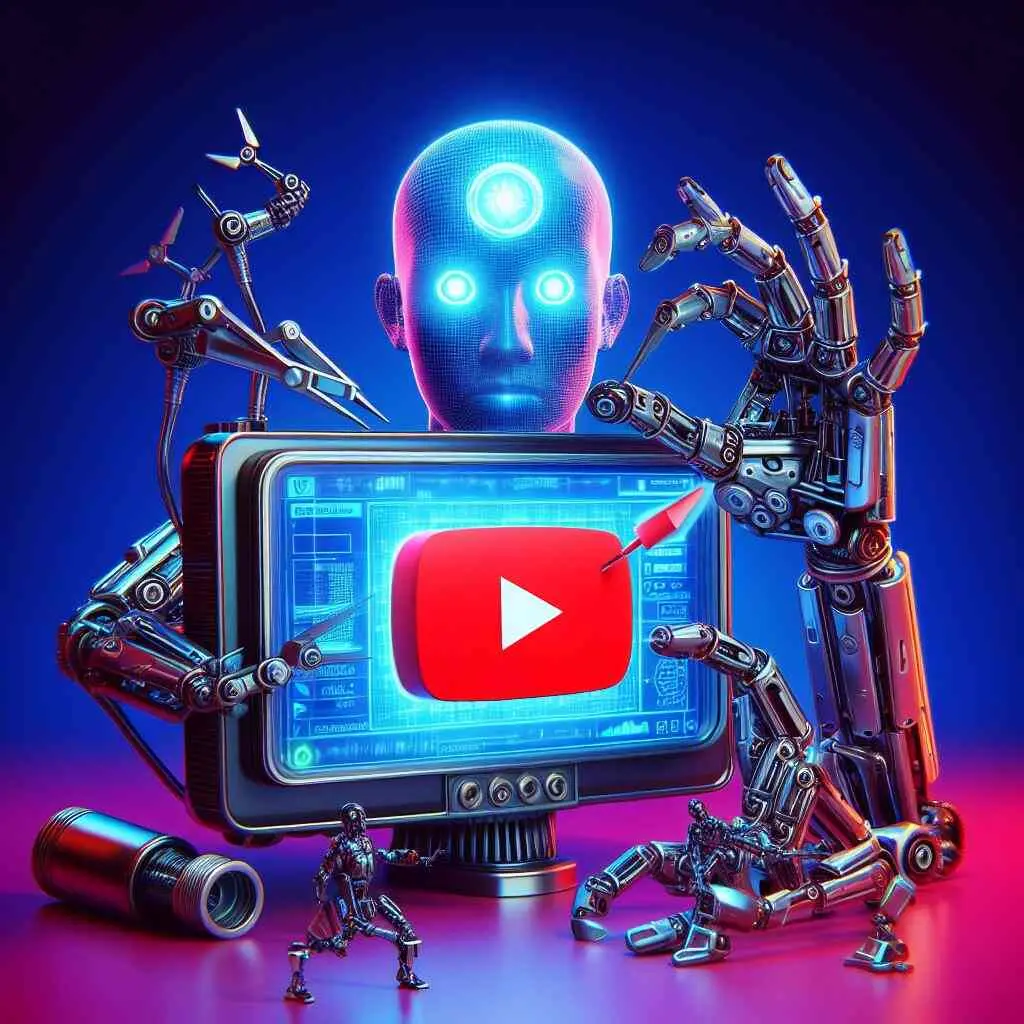The lines between human creativity and machine-generated content are blurring. On YouTube, the world’s largest video platform, AI-powered tools are increasingly assisting content creation. However, with this technological advancement comes a question of transparency: how can viewers distinguish between genuine human-made content and videos significantly influenced by artificial intelligence?
To address this concern, YouTube has taken a significant step forward. They’ve introduced a mandatory disclosure policy for videos that utilize AI-generated content or employ significant alterations with AI tools. This blog post delves into this new policy, exploring its implications for content creators, viewers, and the future of AI-powered video creation on YouTube.
Blurring the Lines: The Rise of AI-Generated Content on YouTube
The use of AI in video creation manifests in various ways on YouTube. Here are some examples:
- Automated Scriptwriting: AI tools can assist with scriptwriting by generating outlines, suggesting dialogue options, or even creating entire scripts based on specific themes or keywords.
- AI-Powered Editing: Software powered by AI can automate editing tasks like scene selection, transitions, and even basic color correction.
- Deepfakes and Synthetic Media: While still uncommon, AI can be used to create realistic deepfakes or manipulate existing footage to create synthetic media, potentially blurring the lines between reality and fiction.
These AI tools offer content creators a range of benefits, from increased efficiency to creative exploration. However, the lack of transparency around their use can raise concerns about misinformation and the potential for manipulated content to go viral.
Transparency Takes Center Stage: YouTube’s New Disclosure Policy
With the mandatory disclosure policy, YouTube aims to bridge the gap between creators and viewers. The policy requires creators to disclose if their videos incorporate any of the following:
- AI-generated content: This includes any video elements substantially created by AI tools, such as scripts, narration, or visuals.
- Significantly altered footage: If AI is used to realistically alter existing footage, manipulate scenes, or create synthetic media, disclosure is mandatory.
How will disclosures be made? YouTube hasn’t specified a single method yet. However, possibilities include:
- A checkbox during upload: Creators might be required to check a box acknowledging the use of AI-generated content or significant AI-powered alterations.
- Disclosure in the video description: Creators could be required to clearly state the use of AI tools in the video description box.
- Visual cues: YouTube might explore on-screen notifications or watermarks that appear during videos that utilize AI.
The specific method of disclosure is still under development, but the core principle remains: transparency for viewers.
The Impact of the Policy: A Double-Edged Sword
The mandatory disclosure policy has both advantages and potential drawbacks:
Advantages:
- Combating Misinformation: By informing viewers about AI involvement, the policy helps them approach content with a more critical eye and reduces the risk of manipulated content spreading as fact.
- Building Trust: Transparency fosters trust between creators and viewers. Viewers can make informed decisions about the content they consume.
- Encouraging Responsible AI Use: The policy potentially discourages the misuse of AI for creating deepfakes or deceptive content.
Potential Drawbacks:
- Increased Scrutiny: Creators who utilize AI tools might face increased scrutiny from viewers, potentially discouraging innovation.
- Overly Complex Disclosures: The disclosure process might become cumbersome for creators, especially for those using multiple AI tools or for minor AI-powered alterations.
- Technical Challenges: Verifying AI usage can be technically challenging. YouTube will need to develop reliable methods to ensure accurate disclosures.
Overall, the policy signifies a significant step towards responsible AI use on YouTube. While challenges exist, the benefits of transparency for viewers outweigh the potential drawbacks.
The Future of AI and Video Creation: A Collaborative Landscape
The mandatory disclosure policy is not an end point, but rather a starting point for a conversation about the future of AI and video creation. Here are some possibilities:
- Standardized AI Disclosure Practices: The YouTube policy could pave the way for standardized disclosure practices across other online platforms.
- Evolving AI Tools: AI tools for video creation might become more transparent themselves, allowing creators to easily identify and disclose AI-generated elements.
- Collaboration, Not Competition: AI tools can be powerful creative collaborators, not replacements for human ingenuity. The focus can shift towards using AI to enhance content creation, not replace it.
Ultimately, the goal is to create a future where AI and human creativity work together to produce engaging and informative videos on YouTube, with viewers empowered to make informed decisions about the content they consume.
